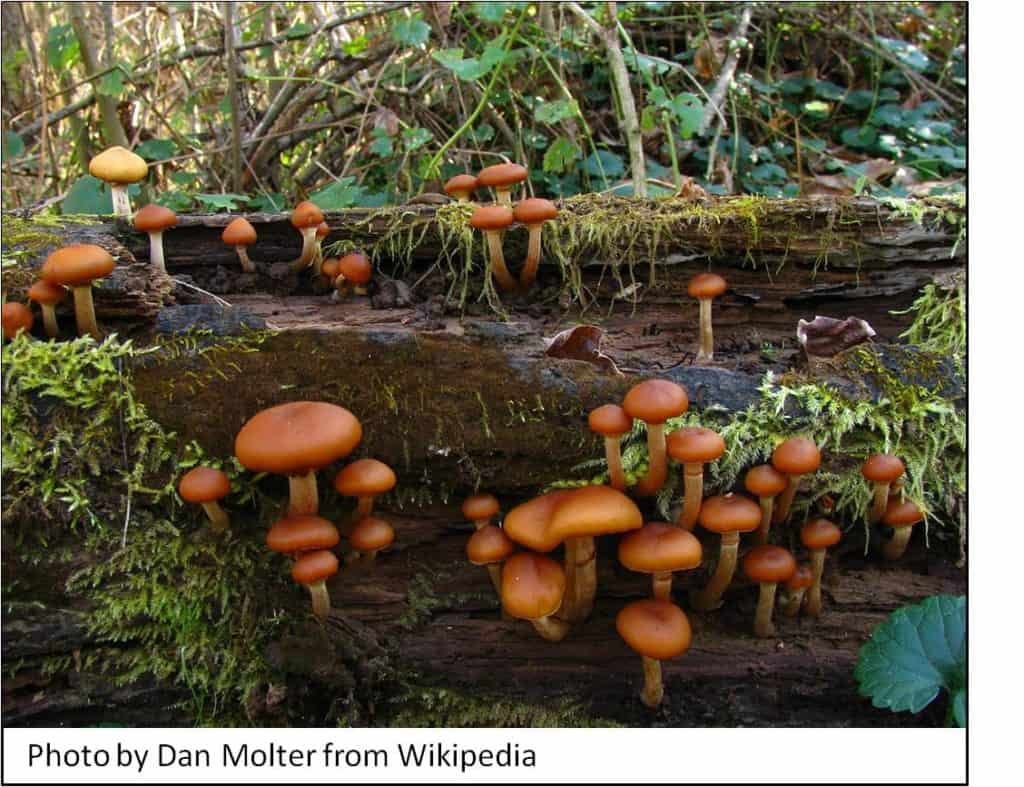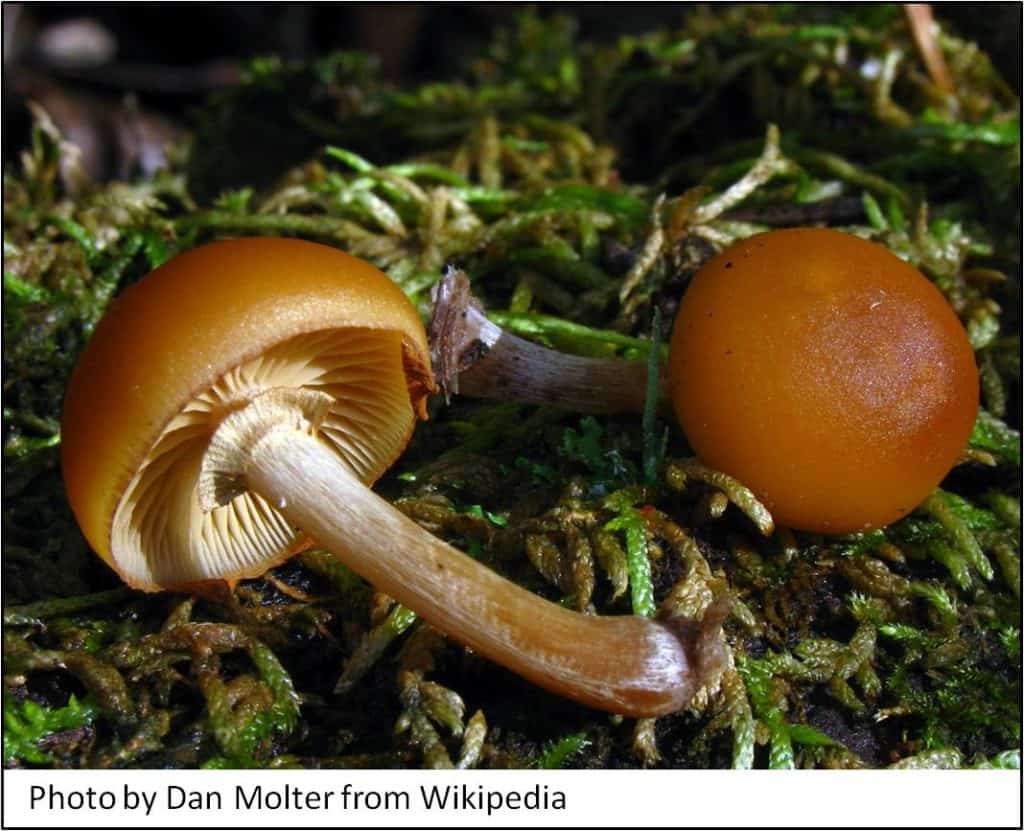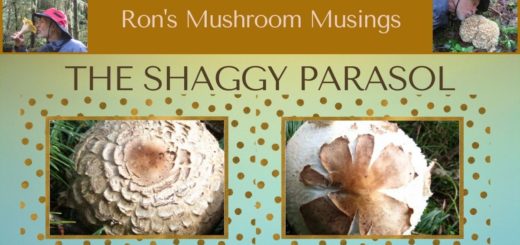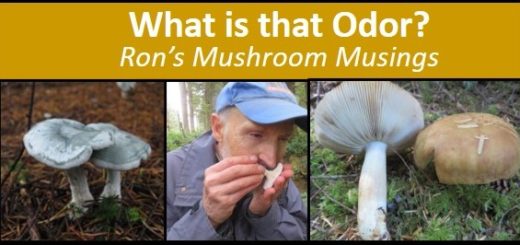Good things come in small packages

Whoever coined this phrase never considered the impact of eating a mushroom in the genus Galerina. While it does come in a small package, its amatoxins pack a powerful punch and not in a good way. We typically associate these deadly chemical compounds with the genus Amanita, which includes the Death Cap and Destroying Angel, names more typically associated with motorcycle gang members. However, amatoxins are also present in some Conocybe, Galerina and Lepiota mushroom species as well. These little beauties, pictured here, have the charming name of Galerina marginata or more commonly referred to as the Deadly Galerina. There was a time when this mushroom was known by several species names, but DNA testing has shown they are all the same mushroom. This is an excerpt from Michael Kuo of the Mushroom Expert website.

“This mushroom appears in older field guides as “Galerina autumnalis,” but a 2001 DNA study (Gulden and collaborators) has synonymized that species—along with Galerina oregonensis, Galerina unicolor, and Galerina venenata—with the older, European species first described in the 18th century, Galerina marginata.” Nonetheless, a Galerina marginata by any other name would smell as sweet would be just as deadly. It would be very convenient if this mushroom only grew within the deep woods of Oregon, but it can easily be found in a neighborhood near you. Being a Saprobic mushroom, it converts the cellulose found in wood into simple carbohydrates for energy. So if there is wood around, there exists the possibility of finding this mushroom.

According to the book Mushrooms of the Pacific Northwest by Steve Trudell and Joe Ammirati “Galerinas occupy a variety of habitats including forests, sphagnum bogs, arctic and alpine tundra, parks and gardens on wood chips, and lawns where grasses and mosses co-mingle.” They also state that “The genus Galerina comprises an array of very small to medium-sized brown species that are notoriously difficult to identify without a microscope. Many are mycena- like, but larger species have dome-shaped caps and somewhat thicker stipes and are more collybia-like”. And if that wasn’t confusing enough, the cap of Galerina marginata can become quite wavy (photo to right) as it ages, giving it an appearance much like that of Psilocybecyanescen. The world of small to even tiny mushroom is amazing. They are an absolute delight to those of us who really enjoy getting those close-up photographs that allow us to practice our macro photography skills. Even if you just like to take your hand lens and see all the intricate patterns and textures they possess. However, if your intentions are to formulate a more interactive relation with the world of small mushrooms, make every effort to know exactly what you are dealing with. As many of us are fond of saying, you can always eat any mushroom once.





